Aktau
This entry covers the 8th, 9th, and 10th of September. The 8th started in the Kazakh town of Aral where we caught a 9:00am train with a destination of Aktau a port on the Caspian Sea. That train journey lasted until 6:30 on the 9th. There is not much to say about the train journey. It was comfortable enough as Nina and I shared a 4 berth cabin and hence had space and privacy. The scenery continued to be flat dry steppes as we have seen on our previous Kazakh train rides. The East to West traverse across Kazakhstan is really a long journey and feels much longer than the Indian Pacific Train journey across Australia. In case you are wondering Kazakhstan is the 9th largest country in the world by area.
9th Sept
The morning of the 10th was spent with a City Tour which I attended but Nina did not, she (Nina) spent some time walking around the city by herself and thereby avoided the frustration of a guided tour where she could not hear the guide. During the course of the morning I learned that people have lived in this regions for hundreds if not thousands of years. That the city of Aktau (which means White Mountain as the soil of the area contains high levels of gypsum which is white) started life as a Soviet Uranium exploration and then mining site. More recently gas and oil have been discovered in the area so that now Aktau is an important industrial city. In addition it is now also a major shipping port with cargo going to and from Europe from China and Central Asia via Aktau and Baku. Population today is about 400,000. Water is scarce here and has always been so. In the past water was made by desalination using nuclear power, (since decommissioned) and is now made by desalination using gas.
This region of Kazakhstan is named Mangestau which is derived from a local phrase in the local Turkic language that means something like "1000 winter camping places". This reflects the fact that winter temperatures here are mild (-5°C) and the nomads of this region wintered in this location. Modern day nomads are now beginning to do the same thing to escape the harser winters elsewhere in Kazakhstan
The following images from my city tour. A statue of the Santa Maria, one of the ships used by Christopher Columbus. The Kazakh poet is famous for transcribing and translating much of Kazakh oral history into both the Kazakh language and Russian. The sea front walking path called the Rock Trail is a major attraction for both locals and tourists.
For a short period the city was named after tje Ukranian poet Schevchenko who was exiled to this part of Kazakhstan during the period of Imperial Russia for writing poems the Emperor did not like.
Finally we walked along Victory Park with a Mig22 converted to a statue at one end and a WWII memorial and eternal flame at the other.
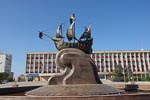
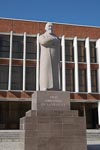
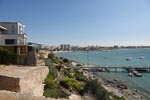
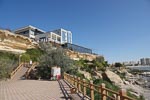
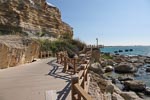
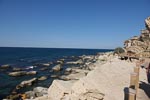
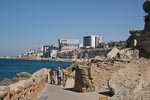
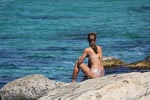
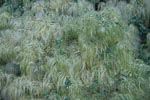
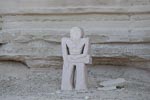
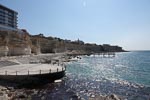
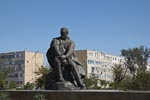
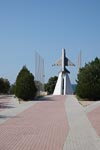
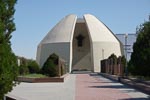
The following pictures are from Nina's solo city tour. They give a different view of the water front.





10th Sept
By dinner time on the 9th Nina was in the throws of a bad cold and was not healthy enough to take part in the planned activity for the day which was a 12 hour 4x4 drive out of town to some supposedly spectacular rocks. Thus she (Nina) spent most of the 10th sleeping trying to recover from her cold and I hung around being a somewhat ineffctive nurse.